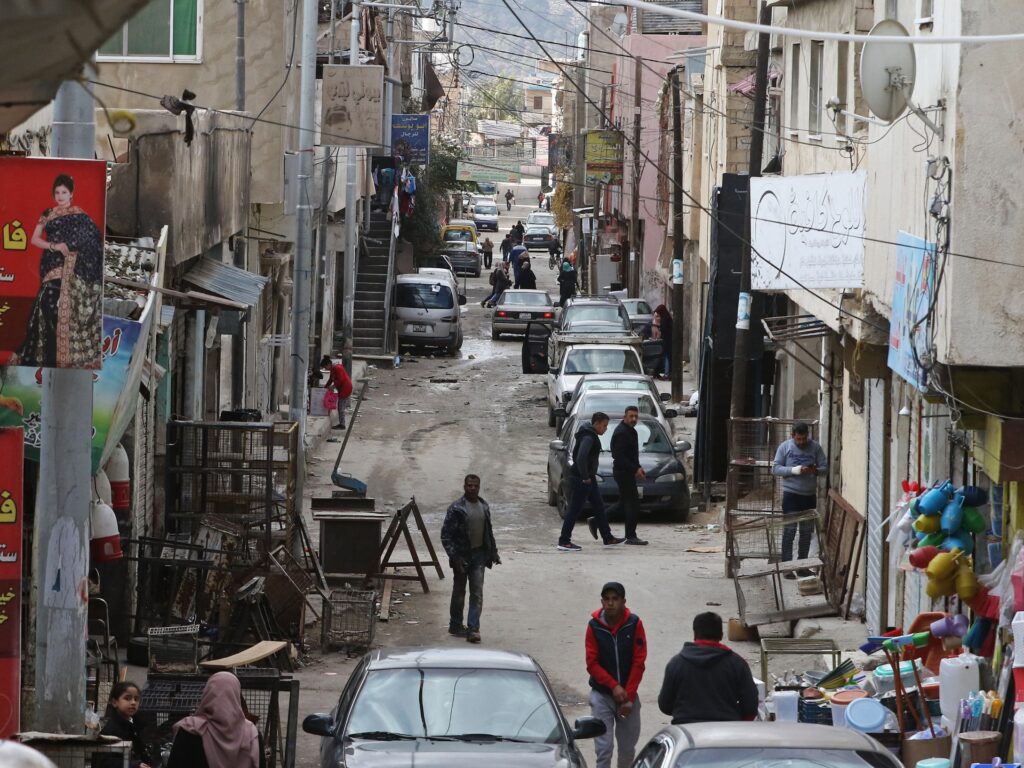In the midst of the current war on Gaza, the New York Times prepared a video report from the Palestinian camps in Jordan in which it said that in this country they have been affected by generations of war and exile.
In her report – for which she chose the title “The Sprawling Palestinian Diaspora Looks to Gaza” – she estimated that the number of Palestinians in the diaspora today exceeds 6 million people, and they are spread throughout the world across the borders of Lebanon, Syria and Egypt, and their presence extends to include other remote pockets in the Americas.
However, the largest percentage of Palestinian expatriates are in Jordan, and according to the investigation, more than 2.3 million of them in total are registered as refugees, that is, slightly larger than the population of the Gaza Strip.
Most of them enjoy full Jordanian citizenship, and some of them – including Queen Rania Al-Abdullah, who was born to Palestinian parents in Kuwait – received great favor from the authorities, but many of them still reside in 10 of the official refugee camps affiliated with the United Nations Relief and Works Agency for Palestine Refugees. (UNRWA) or 3 informal camps managed with some assistance provided by the United Nations.
According to the New York Times, the histories of these refugees are tales of exile, national aspirations, and homesickness, pages of history that are written and rewritten with each new wave of arrivals.
During the Arab-Israeli War of 1948 and its aftermath, which witnessed the establishment of the State of Israel, 700,000 or more Arabs were forced to leave their homes, some at gunpoint, an event known in Arabic as “the Nakba.”
Those who had become “stateless” – as the American newspaper put it – sought temporary asylum in camps that began as tents set up in rows in empty fields in the Gaza Strip, the West Bank and beyond.
Years passed, and the tents were replaced by buildings constructed of aluminum, then concrete, and the spaces separating them were filled with clothing stores, restaurants, flea markets, and barber shops, and these camps were transformed into cities in themselves, according to the journalistic investigation.
Then the Arab-Israeli War broke out in 1967, which resulted in Israel’s occupation of the West Bank and Gaza Strip, which were controlled by Jordan and Egypt, respectively. Thousands of Palestinians were displaced east.
Interviews
Nicholas Casey – who wrote this investigation and was published by the New York Times – says that on November 1, he traveled to those camps with a photographer, to interview and photograph those who live there, and to learn more about what it means to them to be Palestinian in this new era of War and displacement.
Among those he met was a distinguished sheikh named Issa Mahmoud Ahmed Ayesh, who has 14 children and 63 grandchildren, and had a house in the Baqaa camp in Jordan. Ayesh was born in 1949 in a refugee camp in the West Bank, and when the 1967 war broke out, his family fled to Baqaa camp.
Ayesh says, “Life there was desolate. I studied at home where there were no schools.”
Today, Al-Baq’a has become a sprawling Middle Eastern city, and is the largest camp in Jordan, with a population of more than 130,000 people. Despite the decades he spent there, Ayesh hesitates to consider it his homeland, and asserts, “We will not forget Palestine.”
Another Palestinian named Saadi Mahmoud Ahmed Al-Karamla (80 years old) from the village of Deir Aban near Jerusalem in 1948. His grandfather, as he remembers, was the village mukhtar. His family eventually came to Madaba, an informal camp, where he was appointed head of his community.
As for Fatima Ali Abdel Rahman Attia, she and her family were displaced in 1967 from Halhul in the West Bank to the Jordanian capital, where they initially took refuge in a mosque and eventually settled in the Madaba camp.
There is Khader Hussein Salim Al-Masa’id, who still remembers his life as a boy on his family’s farm in the West Bank, where he grew oranges and grapes, surrounded by friends and family members who visited them from Haifa, Jaffa, and Hebron. After the 1967 war, he and his family fled to Baqaa camp.
Al-Masaeed was politically active even in his later years, sometimes taking buses to Amman to join demonstrations demanding the right to return to the West Bank.
“For me, the camp is a temporary emergency accommodation,” he says. He wonders, “Is it fair for someone like me, who is seventy years old, to be homeless?”
Among those whom Casey met and whose story he reported in his investigation was Abdul Karim Suleiman Al-Asfi (77 years old), born in the small village of Basat Al-Falaq in the West Bank. After 1948, he was forced to move to another village in the West Bank and then to a third.
After the 1967 war, he moved to the Sukhna refugee camp in Zarqa Governorate, Jordan.

